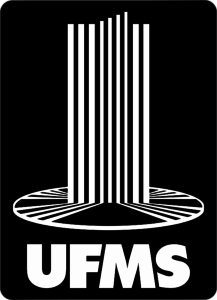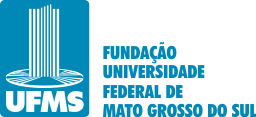Use este identificador para citar ou linkar para este item:
https://repositorio.ufms.br/handle/123456789/4751| Tipo: | Dissertação |
| Título: | INFLUÊNCIA DA INTENSIDADE DE CORRIDA NA POTENCIALIZAÇÃO DO SALTO EM CORREDORES RECREACIONAIS E INDIVÍDUOS FISICAMENTE ATIVOS |
| Autor(es): | Cristiano Rafael Moré |
| Primeiro orientador: | Rodolfo Andre Dellagrana |
| Resumo: | O aumento de desempenho pós-ativação (Post-activation performance enhancement – PAPE) é uma melhora aguda no desempenho de exercícios físicos após uma atividade condicionante (AC) máxima ou submáxima. O PAPE tem sido associado a indivíduos treinados, e parece sofrer influência do nível de condicionamento do indivíduo e intensidade da AC. Entretanto, não está clara a influência da intensidade da AC no PAPE em corridas de endurance comparando indivíduos com diferentes níveis de condicionamento físico. O objetivo deste estudo foi verificar o efeito de duas corridas, com diferentes intensidades no PAPE, em indivíduos com níveis de condicionamento físico distintos. Dezoito homens, divididos em dois grupos: 9 corredores recreacionais (34,5±9,3 anos; 73,1±11,9 Kg; 1,76±0,06 m; 17,4±4,4 % de gordura; 16,4±1,0 Km.h-1/velocidade aeróbica máxima-VAM), e 9 indivíduos fisicamente ativos (34,1±9,4 anos; 83,2±7,7 Kg; 1,79±0,06 m; 25,6±5,4 % de gordura; 13,3±1,2 Km.h-1/VAM) realizaram dois saltos com contra movimento (CMJ) e dois SPRINTs (20 metros) pré e pós corridas de intervenção. Os participantes realizaram um teste máximo incremental (University Montreal Track Test – UMTT) para determinar a VAM e distância a ser completada nas intervenções (70% da VAM e corrida contrarelógio - CCR). A interação do CMJ e SPRINT com o tempo, intervenção e grupo foi analisada por uma ANOVA de três vias. Foi identificada diferença significativa no tempo (F = 10,716; p < 0,01) e na interação corrida vs. grupo (F = 12,094; p < 0,01), com aumento na altura do CMJ em 7,6% pós-corrida a 70% da VAM nos indivíduos fisicamente ativos e 6,9% após a CCR nos corredores. Não houve diferença significativa no SPRINT. Conclui-se que o efeito no desempenho do CMJ foi maior após o protocolo 70% da VAM nos indivíduos fisicamente ativos, e após ambos os protocolos nos corredores recreacionais, sendo ligeiramente maior na CCR, indicando que a intensidade da atividade condicionante pode influenciar no desempenho de acordo com o condicionamento físico. |
| Abstract: | Post-activation performance enhancement (PAPE) is an acute improvement in physical exercise performance after maximal or submaximal conditioning activity (CA). PAPE has been associated with trained individuals, and seems to be influenced by the individual conditioning level and CA intensity. However, the influence of CA intensity on PAPE in endurance events in individuals with different levels of physical conditioning is unclear. The aim of this study was to verify the effect of two runs, with different intensities on the PAPE, in individuals with different levels of physical conditioning. Eighteen men, divided into two groups: 9 recreational runners (34.5±9.3 years, 73.1±11.9 kg, 1.76±0.06 m, 17.4±4.4% fat; 16.4±1.0 Km.h-1/maximum aerobic speed-MAS), and 9 physically active individuals (34.1±9.4 years; 83.2±7.7 kg; 1.79±0.06 m; 25.6±5.4% fat; 13.3±1, 2 Km.h-1/MAS) performed two counter-movement jumps (CMJ) and two sprints pre and post-running intervention. Participants underwent a maximal incremental test (University Montreal Track Test – UMTT) to determine the MAS and distance to be completed in the interventions (70% of MAS and time trial race- TTR). The interaction of CMJ and SPRINT with time, intervention, and group was analysed trhough an ANOVA three-way. A significant difference in the time (F = 10.716; p < 0.01) and intervention*group interaction (F = 12.094; p < 0.01), with an increase in the height of the CMJ in 7.6% post-intervention at 70% of MAS for activie individuals and 6.9% post TTR for recreational runners, respectively. No significant difference was observed for SPRINTs. In conclusion, active individuals had higher PAPE in CMJ after intervention at 70% of MAS, while recreational runners presented PAPE after both interventions (70% of MAS and TTR), indicating that the greater intensity can influence the performance according to physical conditioning. Keywords: Races, Performance, Conditioning activity, Jumps. |
| Palavras-chave: | Corridas, Desempenho, Atividade condicionante, Saltos. |
| País: | Brasil |
| Editor: | Fundação Universidade Federal de Mato Grosso do Sul |
| Sigla da Instituição: | UFMS |
| Tipo de acesso: | Acesso Aberto |
| URI: | https://repositorio.ufms.br/handle/123456789/4751 |
| Data do documento: | 2022 |
| Aparece nas coleções: | Programa de Pós-Graduação em Ciências do Movimento |
Arquivos associados a este item:
| Arquivo | Tamanho | Formato | |
|---|---|---|---|
| DISSERTAÇÃO - Cristiano Rafael Moré.pdf | 1,22 MB | Adobe PDF | Visualizar/Abrir |
Os itens no repositório estão protegidos por copyright, com todos os direitos reservados, salvo quando é indicado o contrário.

